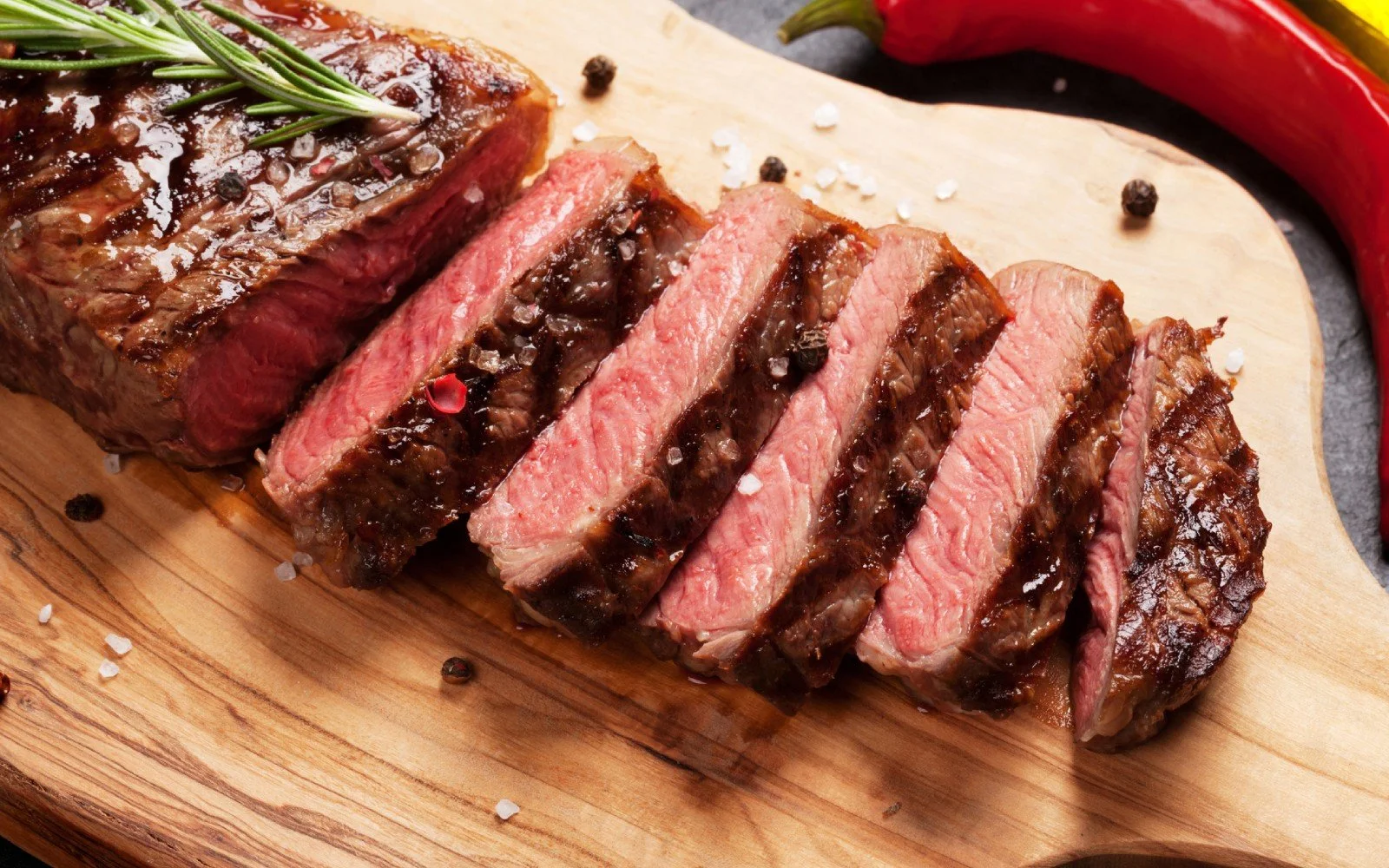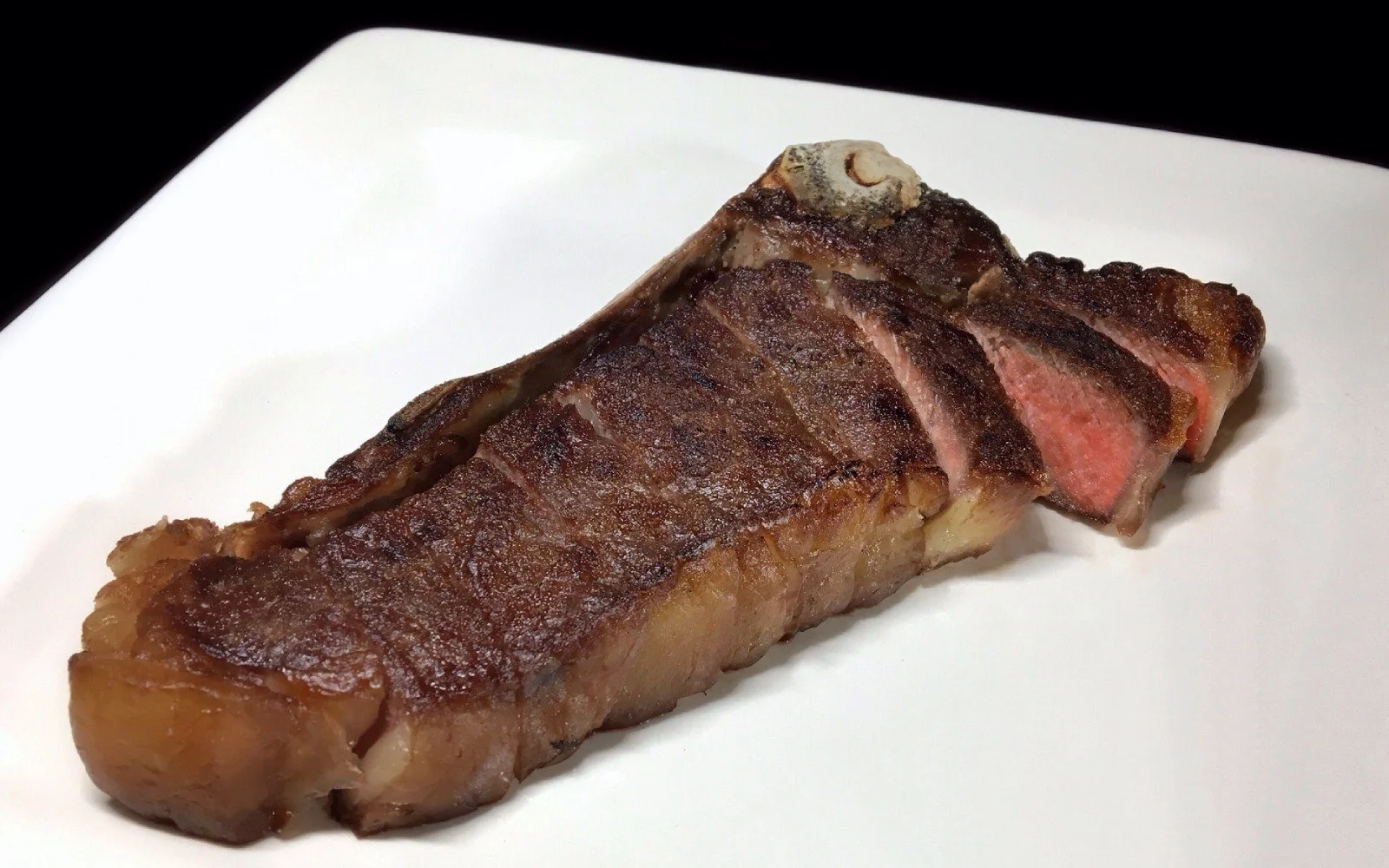Reverse Searing: Best Way To Cook a Steak?
Discover > Texas Home Cooking > Reverse Searing: Best Way To Cook a Steak?
Reverse searing is described by many chefs as the best way to cook a steak. The technique involves slow-cooking a piece of meat using low, indirect heat, before searing it over high heat. This cooking process gives us more control over the steak’s internal temperature, its delicious brown crust, as well as the tenderness of the meat.
Reverse searing has become a popular cooking technique for beef-crazy Texans, as it gives you the perfect medium-rare steak. Traditionally, a steak is seared first, with many cookbooks telling us that this keeps the juices locked in. But this isn't really the case. Searing simply adds flavor to the beef and does not seal in any juices.
Cooking Steak is an art that requires patience, precision, and a good understanding of the different cooking methods. One of the most important factors in achieving a delicious steak is choosing the right cut, such as thick cut steaks, which are known for their juiciness and tenderness. One popular method for cooking steaks is the reverse sear steak method, which involves slow cooking the steak at a low temperature before finishing it off with a high-heat sear. This results in a steak with a crispy, caramelized crust on the outside and a juicy, tender interior.
Sear steaks are a popular dish that can be cooked in various ways, including on a charcoal grill or a gas grill. Another popular cooking method for searing steaks is using a cast iron pan. Regardless of the cooking method, the key to a delicious sear steak is to first bring it to room temperature and then season it well. One of the most important cooking tips to keep in mind when searing steaks is to heat the pan or grill to a high temperature before adding the steaks. This creates a caramelized crust on the outside while keeping the inside juicy and tender.
Why Do We Reverse Sear?
There are a number of benefits to reverse searing your steak – here are three you should know about.
Even cooking – When slow-cooking a steak, the more gently the meat is cooked, the more evenly it cooks. This results in a perfectly juicy steak with no overcooked parts.
Better browning – A crisp dark brown crust beautifully complements the tender meat within the steak. This browning is a result of the Maillard reaction, a chemical reaction in which proteins and sugars are subjected to high heat, producing that brown crust we all know and love. The Maillard reaction takes place in temperatures above 300°F (150°C).
Tender meat – Meat contains cathepsins, which are enzymes that break down tough muscle proteins. Cathepsins are responsible for making dry-aged meat tender. At refrigerator temperatures, cathepsins move slowly. However, when subjected to heat, their activity increases until it drops off at 122°F (50°C). Slow-cooking is akin to rapidly aging your steak.
Flexibility – When slow-cooking your meat, your window of time is longer, enabling you to nail the right temperature to achieve that perfect medium-rare steak. The conventional method of searing your steak beforehand gives you a much shorter time window. A minute too short and you’ll have a chewy, undercooked steak; a minute too long and you’ll have a tough, overcooked one!
BBQ guru Meathead Goldwyn compares this lengthened window of cooking time to shooting an arrow at a tortoise rather than shooting an arrow at a rabbit. The slower animal makes for an easier target!
A reverse seared steak recipe is a simple and flavorful way to cook a steak to perfection. To start, season the steak with steak seasoning and let it come to room temperature. Then, slow cook the reverse seared steak in the oven until it reaches your desired temperature. Next, heat a hot pan on the stove and add a tablespoon of unsalted butter. Once the butter has melted, place the steak in the pan and sear each side until a crispy crust has formed. Remove the steak from the pan and let it rest for a few minutes. Before serving, sprinkle some kosher salt on the steak for added flavor. With these easy steps, you can enjoy a delicious, juicy, and tender reverse seared steak in no time.
How to Reverse Sear:
For the best results when reverse searing, refrigerate the steaks while they’re uncovered. This will dry out the exterior of the meat. Also, if possible, use an instant-read thermometer for precise cooking.
1. Preheat the oven to 275°F (135ºC).
2. Place a large iron skillet in the oven.
3. Line a baking tray with foil and place a wire rack on top.
4. Place the steak on the wire rack and season the meat with salt and pepper.
5. Cook the steak in the oven. Use an instant-read meat thermometer to determine the temperature of the thickest part of the meat. After 15 minutes in the oven, check the temperature. Then continuously monitor the temperature of the steak every five minutes until you reach the desired temperature: 90 to 95ºF (32 to 35ºC) for medium-rare, 100 to 105ºF (38 to 41ºC) for medium.
6. Start to pan sear the meat by removing the iron skillet from the oven and transferring it to the stovetop.
7. Turn the heat on to high, then add some vegetable oil (how long does vegetable oil last?).
8. Sear the steak on each side for around two minutes or until the desired internal temperature is reached: 120 to 125ºF (49 to 52ºC) for medium-rare or 130ºF (50ºC) for medium.
9. You can add butter to enhance the browning effect and add extra flavor.
10. Sear the sides to render the fat – around 30 seconds per side.
11. After searing the steak, transfer it to the wire rack on top of the foil-lined baking tray.
12. Allow the meat to rest. This process is called carryover cooking, which will finish cooking the steak.
Reverse searing your steak is super easy to do. Though it may take a bit more time than conventional steak-cooking methods, you’re guaranteed to get a deliciously succulent steak each and every time.
Ready for another delicious challenge? Follow our guide to cook Korean barbecue at home!
Having thoughts wether red meat is good or bad for you? Check it out here!
Are you interested in learning how to cook steakhouse quality steaks? Click here.




